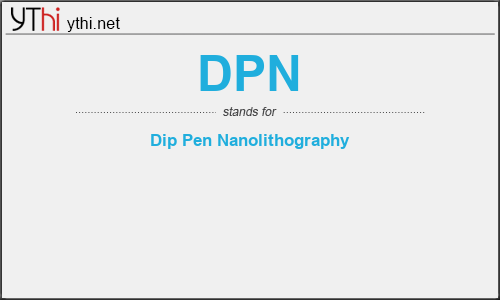What does DPN mean? What is the full form of DPN?
The Full Form of DPN is Dip Pen Nanolithography.
Dip pen nanolithography (DPN) is a scanning probe lithography technique where an atomic force microscope (AFM) tip is used to create patterns directly on a range of substances with a variety of inks. A common example of this technique is exemplified by the use of alkane thiolates to imprint onto a gold surface.This technique allows surface patterning on scales of under 100 nanometers. DPN is the nanotechnology analog of the dip pen (also called the quill pen), where the tip of an atomic force microscope cantilever acts as a “pen,” which is coated with a chemical compound or mixture acting as an “ink,” and put in contact with a substrate, the “paper.”
DPN enables direct deposition of nanoscale materials onto a substrate in a flexible manner. Recent advances have demonstrated massively parallel patterning using two-dimensional arrays of 55,000 tips. Applications of this technology currently range through chemistry, materials science, and the life sciences, and include such work as ultra high density biological nanoarrays, and additive photomask repair.
A direct-write “dip-pen” nanolithography (DPN) has been developed to deliver collections of molecules in a positive printing mode. An atomic force microscope (AFM) tip is used to write alkanethiols with 30-nanometer linewidth resolution on a gold thin film in a manner analogous to that of a dip pen. Molecules are delivered from the AFM tip to a solid substrate of interest via capillary transport, making DPN a potentially useful tool for creating and functionalizing nanoscale devices.
DPN
means
Dip Pen Nanolithography![]()
Translate Dip Pen Nanolithography to other language.


Leave a Reply
You must be logged in to post a comment.